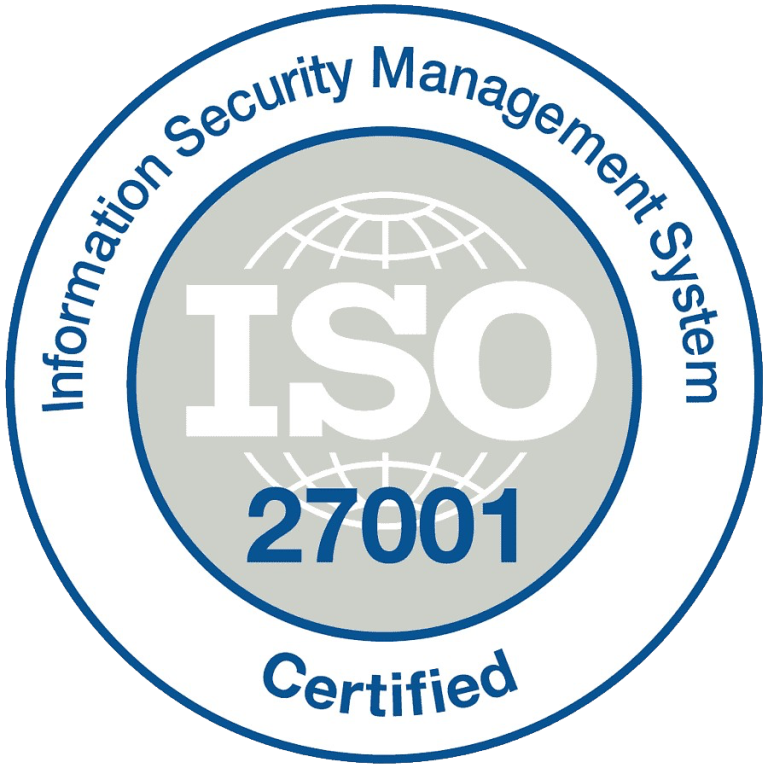Voice SMS is a versatile messaging solution that allows businesses to deliver personalized voice messages directly to mobile phones, enhancing engagement and accessibility. Alongside detailed case studies, we will break down the critical components of a successful voice SMS ad, offering actionable insights to help you optimize your communication strategy and maximize impact.
In this article, we explore real-world examples of how businesses have implemented Voice SMS across diverse industries.
Understanding voice SMS
Voice SMS is a messaging service that allows users to send voice messages to recipients’ mobile devices. Unlike traditional SMS, which relies on text, voice SMS delivers messages in an audio format, enabling a more personal and engaging communication method.
Benefits of implementing voice SMS in businesses
Voice SMS offers several advantages over traditional text messaging:
1. Personalization
Voice SMS can convey emotions and nuances through tone and inflection. The use of local languages and the human voice can significantly enhance the listener’s experience.
2. Seamless integration
Voice SMS can be easily integrated with other communication channels, such as customer service platforms and sales workflows, making it a versatile tool for businesses.
3. Increased accessibility
Voice SMS benefits visually impaired individuals and those who prefer verbal communication. Voice SMS can also aid illiterate populations by providing them with accessible information.
4. Enhanced engagement
By forming a personal connection, Voice SMS increases customer engagement and satisfaction, fostering loyalty among clients.
5. Convenience and multitasking
Customers can listen to Voice SMS while driving, doing house chores, or engaging in other activities, making it harder to ignore the message.
Successful case studies of businesses implementing voice SMS
To understand the practical applications of Voice SMS, let us explore several case studies from various sectors, including the strategies employed and the outcomes achieved.
1. Financial sector: Zenith bank
Zenith Bank, one of Nigeria’s leading financial institutions, implemented voice SMS as part of its customer communication strategy. The bank recognized the need to improve customer engagement and reduce the number of missed communications.
Strategies used:
- Zenith Bank focused on sending transaction alerts, promotional offers, and important account updates through personalized voice messages. By segmenting its customer base, it tailors messages that resonate with specific demographics, such as young professionals or retirees.
- Messages are recorded in local languages to cater to diverse customer demographics, enhancing relatability and engagement.
- The bank incorporated a system for customers to provide feedback on the messages received, allowing for continuous improvement. They encourage customers to respond via voice prompts, creating a two-way communication channel.
- The automated voice banking services use interactive voice response (IVR) solution to enable customers customers to perform basic banking transactions.
Results:
- Increased customer engagement, with a higher response rate compared to traditional SMS.
- Due to the personalized nature of voice messages, they have improved customer satisfaction scores, with many customers expressing positive feedback.
- They have strengthened brand loyalty, as more customers reported feeling valued and informed.
2. Telecommunications: MTN (Africa)
MTN, a prominent telecommunications company, adopted Voice SMS to enhance its customer service experience and streamline communication.
Strategies used:
- The company set up automated voice messages to remind customers about bill payments and service updates, ensuring timely communication, reducing the burden on customer service representatives, and allowing for consistent messaging.
- MTN integrates Voice SMS with an IVR system, enabling customers to respond to messages or access information using their voice. This allows them to confirm payments or inquire about services without speaking to an agent. After sending important notifications, MTN encourages customer feedback through simple voice prompts, fostering engagement and community.
Results:
- Reduced missed payments, as customers were more likely to respond to voice messages.
- Strengthened customer relationships, leading to improved customer retention rates.
- Enhanced operational efficiency, as the IVR system reduced call center volumes.
3. Healthcare: Apollo hospitals
Apollo Hospitals, a primary healthcare provider, utilized voice SMS as part of their omni channel to remind patients about appointments and medication schedules. The healthcare sector often faces challenges related to patient engagement and appointment management.
Strategies used:
- The hospital sent out timely reminders for upcoming appointments, including pre-visit instructions via voice messages. These reminders were personalized, mentioning the patient’s name and the specific details of their appointment.
- After appointments, patients receive voice messages checking in on their well-being and encouraging feedback about their visit. Apollo also uses Voice SMS to remind patients about medication schedules, ensuring adherence to their treatment plans.
Results:
- Decreased no-show rates for appointments, significantly improving operational efficiency.
- Enhanced patient engagement, with many patients expressing appreciation for the personal touch of voice messages.
- Improved adherence to medication schedules, resulting in better health outcomes for patients.
4. Retail sector: Big Bazaar
Big Bazaar, a popular retail chain in India, employed voice SMS to send promotional offers and updates on sales events, aiming to boost customer engagement and sales.
Strategies used:
- The retail chain uses customer data to send personalized voice messages about tailored promotional offers based on shopping behavior. This data-driven approach ensures customers receive relevant messages, increasing the likelihood of conversion.
- Voice messages announce special sales events, encouraging immediate customer action. Big Bazaar integrates Voice SMS with its loyalty program, sending updates on accumulated points and exclusive member offers.
Results:
- An increase in promotional offer redemption rates, demonstrating the effectiveness of personalized communication.
- Enhanced customer loyalty, with many customers appreciating the personal touch of voice messages, reflected in an uptick in repeat visits.
- Increased sales during promotional periods, leading to a boost in revenue during key sales events.
5. Non-profit sector: Innovation for poverty action (IPA)
Innovation for Poverty Action (IPA), a research and policy nonprofit, utilized Voice SMS to conduct surveys and disseminate important research findings in developing countries.
Strategies used:
- IPA employed Voice SMS to conduct remote surveys, particularly in regions with low literacy rates, allowing respondents to answer questions verbally.
- To ensure inclusivity, IPA localizes messages in native languages, making participation accessible to diverse populations. Voice SMS gathers responses quickly and efficiently, allowing reliable data collection from rural areas without internet access.
Results:
- IPA saw an increase in survey participation, especially from regions with lower literacy levels.
- Voice SMS allowed IPA to collect more accurate data, contributing to policy decisions that directly impact poor communities.
- By using Voice SMS instead of traditional in-person surveys, IPA was able to reduce operational costs significantly.
5. Business process outsourcing (BPO) sector: House of IT
House of IT, an Australian BPO with clients in Australia, Europe, and the USA, provides services such as data entry outsourcing, software development, IT support, and managed services. House of IT used Voice SMS and Interactive Voice Response (IVR) systems to manage employee attendance and address the lack of advance notifications for lateness or absenteeism.
Strategies used:
- House of IT established free attendance hotlines for each major telecom carrier in the Philippines, Globe, Smart, and Sun. These hotlines enable employees to easily report when they are late or absent, even if they lack airtime or internet access.
- When employees contact the hotline, they receive an automated call asking about their lateness or absence and the reason for it. This allows HR and management to be notified instantly, enabling them to plan workforce needs and minimize disruptions.
Results:
- The hotline system greatly reduced excuses related to poor communication and allowed managers to receive timely updates on employee availability.
- With up-to-date notifications, House of IT was able to better plan around absences, improving operational efficiency.
- The easy access to reporting, combined with the automated system, increased employee accountability for attendance.
Key components of a successful voice SMS advertisement
To create effective voice SMS advertisements, businesses should focus on the following components:
- Script: Develop a clear, concise message that communicates essential information in a conversational tone. Keep it brief, ideally under 30 seconds.
- Voice: Select a friendly, relatable voice that resonates with the target audience and reflects the brand’s identity, whether formal, casual, or playful.
- Background music: Use subtle music to enhance the message without distraction. Ensure it aligns with the brand identity and complements the content.
- Call to action: Include a clear prompt encouraging listeners to take specific actions, such as visiting a website or calling a number, making it easy to understand.
- Technical quality: Ensure high audio quality for clarity and professionalism. Invest in quality recording equipment and editing software to produce crisp audio.
Unlocking the future of customer communication with voice SMS
Voice SMS is transforming how businesses interact with their customers, providing a more personal, accessible, and engaging alternative to traditional text messaging. By fostering stronger connections and enhancing customer satisfaction, this innovative tool is proving its value across multiple sectors, as seen in the case studies featured in this article.
The ability to convey emotions, cater to diverse audiences, and offer seamless integration into existing workflows makes voice SMS a versatile asset for any business looking to improve its outreach. As the demand for more innovative communication solutions grows, voice SMS emerges as a key player in boosting customer engagement and driving business performance. By incorporating Voice SMS into your strategy, you can strengthen customer relationships and gain a competitive edge in a fast-paced marketplace.





